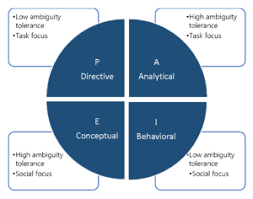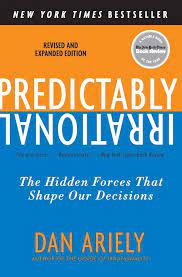Exploring Decisioning Tools for Better Decision Making
Decision making is a crucial aspect of our personal and professional lives. Whether it’s choosing a career path, making investment decisions, or deciding on daily tasks, the choices we make can have a significant impact on our future. To assist in this process, decisioning tools have emerged as valuable resources to help individuals and organizations make informed decisions.
What are Decisioning Tools?
Decisioning tools are software applications or frameworks designed to facilitate the decision-making process. These tools utilize various algorithms, data analysis techniques, and models to analyze information and provide insights that can aid in making better decisions.
Types of Decisioning Tools
There are several types of decisioning tools available, each catering to different decision-making scenarios:
- Decision Trees: A graphical representation of decisions and their possible consequences, helping users visualize different outcomes based on various choices.
- Predictive Analytics: Utilizes historical data and statistical algorithms to forecast future trends and outcomes.
- Scenario Analysis: Examines multiple scenarios to assess potential risks and rewards associated with each decision.
- A/B Testing: Compares two versions of a product or service to determine which one performs better based on user feedback.
- Cognitive Biases Mitigation: Tools that help identify and mitigate cognitive biases that may influence decision making.
The Benefits of Using Decisioning Tools
By leveraging decisioning tools, individuals and organizations can experience several benefits:
- Data-Driven Decisions: Decisioning tools enable users to base their decisions on data and analysis rather than gut feelings or intuition.
- Risk Reduction: By considering various scenarios and analyzing potential outcomes, decisioning tools can help mitigate risks associated with certain choices.
- Efficiency Improvement: These tools streamline the decision-making process by providing quick insights and recommendations based on available information.
- Informed Choices: Users can make more informed choices by utilizing the analytical capabilities of decisioning tools to assess all relevant factors before making a decision.
In conclusion, decisioning tools play a vital role in enhancing the quality of decisions made by individuals and organizations. By leveraging these tools effectively, users can navigate complex decision-making processes with confidence and achieve better outcomes in various aspects of their lives.
9 Key Benefits of Using Decisioning Tools for Improved Business Outcomes
- Facilitate data-driven decision making
- Help mitigate risks associated with decisions
- Provide quick insights and recommendations
- Enable visualization of different decision outcomes
- Enhance efficiency in the decision-making process
- Assist in forecasting future trends and outcomes
- Support scenario analysis for better risk assessment
- Identify and mitigate cognitive biases influencing decisions
- Promote informed choices based on data and analysis
6 Drawbacks of Decisioning Tools: Balancing Costs, Complexity, and Overreliance on Data
- May lead to overreliance on data and analysis, neglecting intuition and gut feelings.
- Initial setup and customization of decisioning tools can be time-consuming and complex.
- Costly investment required for acquiring advanced decisioning tools with robust features.
- Potential for inaccuracies in data inputs leading to flawed decision outcomes.
- Limited flexibility in certain decisioning tools may not cater to unique or complex decision-making scenarios.
- Users may experience a learning curve when adapting to new decisioning tools, impacting productivity initially.
Facilitate data-driven decision making
Decisioning tools offer a significant advantage by facilitating data-driven decision making. By harnessing the power of data analysis and algorithms, these tools enable users to base their decisions on factual information rather than subjective opinions or biases. This approach ensures that decisions are grounded in evidence and insights derived from data, leading to more informed and rational choices. Ultimately, the ability to make data-driven decisions with the aid of decisioning tools can result in better outcomes and increased success in both personal and professional endeavors.
Help mitigate risks associated with decisions
Decisioning tools play a crucial role in helping mitigate risks associated with decisions by providing users with the ability to analyze various scenarios and potential outcomes before making a choice. By leveraging data analysis and predictive modeling, these tools enable individuals and organizations to assess the potential risks involved in different decision pathways, allowing them to make informed choices that minimize negative consequences. This proactive approach to risk management empowers users to navigate complex decision-making processes with greater confidence and certainty, ultimately leading to more successful outcomes.
Provide quick insights and recommendations
One key advantage of decisioning tools is their ability to provide quick insights and recommendations. By leveraging data analysis and algorithms, these tools can swiftly process information and offer valuable guidance to users facing complex decisions. This feature not only saves time but also enhances the decision-making process by presenting relevant information in a concise and actionable format. Users can benefit from timely recommendations that help them navigate through uncertainties and make informed choices efficiently.
Enable visualization of different decision outcomes
One significant advantage of decisioning tools is their ability to enable the visualization of different decision outcomes. By presenting decision trees, graphs, or other visual representations, these tools help users see the potential consequences of various choices more clearly. This visual aid not only enhances understanding but also allows individuals and organizations to assess and compare different scenarios effectively, leading to more informed and strategic decision-making processes.
Enhance efficiency in the decision-making process
Decisioning tools offer a significant advantage by enhancing efficiency in the decision-making process. By utilizing data analysis, algorithms, and models, these tools streamline the decision-making process and provide quick insights and recommendations based on available information. This efficiency improvement allows individuals and organizations to make decisions more promptly, reducing delays and ensuring that choices are made in a timely manner. Ultimately, by enhancing efficiency, decisioning tools enable users to navigate complex decision-making scenarios more effectively and make informed choices with greater speed and accuracy.
Assist in forecasting future trends and outcomes
Decisioning tools provide a valuable advantage by assisting in forecasting future trends and outcomes. By analyzing historical data and utilizing predictive analytics algorithms, these tools can offer insights into potential scenarios and help users anticipate possible outcomes. This proactive approach enables individuals and organizations to make informed decisions based on a forward-looking perspective, allowing them to adapt strategies, mitigate risks, and capitalize on emerging opportunities with greater confidence.
Support scenario analysis for better risk assessment
Decisioning tools offer valuable support for scenario analysis, enabling users to conduct thorough assessments of various potential outcomes and associated risks. By utilizing these tools, individuals and organizations can explore different scenarios, evaluate the likelihood of each outcome, and make more informed decisions based on a comprehensive understanding of the risks involved. This proactive approach to risk assessment empowers users to anticipate challenges, plan for contingencies, and ultimately enhance their decision-making process by considering a wide range of possibilities.
Identify and mitigate cognitive biases influencing decisions
One significant advantage of decisioning tools is their ability to identify and mitigate cognitive biases that can influence decision-making processes. By leveraging algorithms and data analysis techniques, these tools can help individuals and organizations recognize and counteract common biases such as confirmation bias or anchoring effect. By bringing awareness to these biases and providing strategies to overcome them, decisioning tools enable users to make more rational and objective decisions based on facts and evidence rather than subjective perceptions. This proactive approach to addressing cognitive biases ultimately leads to more informed and effective decision-making outcomes.
Promote informed choices based on data and analysis
One significant advantage of decisioning tools is their ability to promote informed choices based on data and analysis. By utilizing these tools, individuals and organizations can make decisions grounded in factual information rather than relying solely on intuition or subjective judgment. This data-driven approach allows users to assess various factors, consider different scenarios, and analyze potential outcomes before making a decision. Ultimately, by leveraging the analytical capabilities of decisioning tools, users can make well-informed choices that are more likely to lead to successful results.
May lead to overreliance on data and analysis, neglecting intuition and gut feelings.
One potential drawback of decisioning tools is that they may inadvertently foster an overreliance on data and analysis, potentially overshadowing the importance of intuition and gut feelings in the decision-making process. While data-driven insights are valuable, solely relying on quantitative metrics provided by these tools can lead to a disconnect from one’s innate instincts and emotional intelligence. Intuition and gut feelings often play a crucial role in decision making, offering unique perspectives and insights that data alone may not capture. Therefore, it is essential for individuals to strike a balance between leveraging decisioning tools for analytical support and honoring their intuition to make well-rounded and holistic decisions.
Initial setup and customization of decisioning tools can be time-consuming and complex.
The initial setup and customization of decisioning tools can present a significant challenge, as it often requires a considerable amount of time and expertise to configure these tools to suit specific needs. The complexity involved in setting up decisioning tools can be daunting for users who may not have the technical knowledge or resources required to customize the tools effectively. This hurdle can potentially delay the implementation of decisioning tools and hinder their adoption within an organization or by individuals seeking to improve their decision-making processes.
Costly investment required for acquiring advanced decisioning tools with robust features.
One significant drawback of decisioning tools is the substantial financial investment required to acquire advanced tools with robust features. Implementing sophisticated decisioning tools often entails significant upfront costs, as well as ongoing expenses for maintenance, upgrades, and training. This financial burden can be a barrier for individuals or organizations with limited budgets, potentially limiting access to the benefits of advanced decision-making capabilities. As a result, the cost factor can hinder the adoption and utilization of cutting-edge decisioning tools, restricting opportunities for enhancing decision-making processes and outcomes.
Potential for inaccuracies in data inputs leading to flawed decision outcomes.
One significant drawback of decisioning tools is the potential for inaccuracies in data inputs, which can ultimately result in flawed decision outcomes. When the data fed into these tools is incorrect, outdated, or incomplete, the analyses and recommendations generated by the tools may not be reliable. This can lead to misguided decisions that have negative consequences for individuals or organizations. It is crucial for users of decisioning tools to ensure the accuracy and quality of the data inputs to minimize the risk of making flawed decisions based on faulty information.
Limited flexibility in certain decisioning tools may not cater to unique or complex decision-making scenarios.
Certain decisioning tools may have a con of limited flexibility, which can be a drawback when dealing with unique or complex decision-making scenarios. In some cases, the rigid structure of certain tools may not allow for customization or adaptation to specific situations that require a more nuanced approach. This limitation can hinder the effectiveness of decisioning tools in addressing intricate and unconventional decision-making challenges, potentially leading to suboptimal outcomes when faced with complex scenarios that do not fit within the tool’s predefined parameters.
Users may experience a learning curve when adapting to new decisioning tools, impacting productivity initially.
When incorporating new decisioning tools into their workflow, users may encounter a learning curve that can temporarily hinder productivity. Adjusting to unfamiliar interfaces, algorithms, and analytical processes may require time and training, leading to initial slowdowns in decision-making efficiency. The need to understand how to effectively utilize the features of the decisioning tools can pose challenges for users, potentially impacting their ability to make quick decisions and navigate the tool seamlessly. However, with patience, practice, and support, users can gradually overcome this hurdle and harness the full potential of decisioning tools to enhance their decision-making capabilities in the long run.




